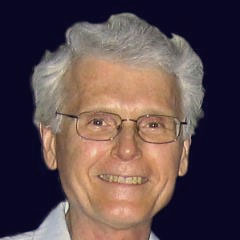In 1998 a severe flood hit the San Francisquito Creek, which runs from the foothills above Stanford University to San Francisco bay, forming the boundary between Palo Alto to the south (Santa Clara County) and Menlo Park and East Palo Alto to the north (San Mateo County). This flood was the result of the largest recorded flow in the creek (7200 cubic feet/sec) and caused about $28M in damage in Palo Alto and East Palo Alto.
Status 2002/2003
A San Francisquito Creek Joint Powers Authority (SFCJPA) was created in 1999 among the five jurisdictions involved in the flood area (the three cities and the two counties) to seek ways to contain and control future flooding in the creek. In 2002/2003, a neighborhood group from the Palo Alto Crescent Park and Duveneck/St. Francis areas became frustrated with slow progress and got together to try to understand the dynamics of the creek and the causes of local flooding so that a thoughtful set recommendations could be made to the JPA and participating jurisdictions. Members of the neighborhood association included:
- Thomas C. Rindfleisch
- Stephen Monismith
- Steve Bisset
- Art Kraemer
- Stan Smith and
- Xenia Hammer
The neighborhood group produced two main outputs from its work to date:
- A report [PDF] documenting group studies and recommendations for flood control in San Francisquito Creek
- A calibrated model for San Francisquito Creek developed based on the US Army Corps of Engineers HEC-RAS system and survey data characterizing the creek assembled by the Santa Clara Valley Water District.
Status 2009
A more recent (November 2009) study [PDF] analyzes approaches to increase conveyance in the reach from West Bayshore to El Camino. This study assumes that the reach from Bayshore to the Bay will be re-engineered to accommodate a 100-year flow (9,400 cfs) based on work now in progress under the SFC JPA. The study shows that a combination of:
- Increasing the capacities of the Middlefield, Pope-Chaucer, University, and Newell bridges plus several private pedestrian bridges in this reach,
- Widening six specific constriction points in the creek between Bayshore and Palm Street (Palo Alto), and
- Reducing the Manning n values (flow “friction”) between Bayshore and University
has the potential of increasing overall creek conveyance so that a 100-year flow could be accommodated without excessive increases in levee heights above what is already in place.
Status 2014
More recently (June 2014), the Santa Clara Valley Water District (SCVWD) Board of Directors considered a proposed modification to the San Francisquito Creek (SFC) flood protection project being developed jointly with the San Francisquito Creek Joint Powers Authority (SFCJPA). The driving motivation for this change is one of funding – there is not enough money available to expeditiously implement a Preferred Plan, which would include upgrades to the creek to contain at least a 100-year flow (9,200 cubic feet per second) from Middlefield bridge to the bay.
The dilemma is whether or not we should wait an indeterminate amount of time for enough federal, state, and local funding to be available to start the Preferred Project, or should we move ahead immediately with a lesser Modified Project using available state and local funding. The Modified Project would still raise the capacity of the reach from Hwy 101 to the bay to 9,200 cfs, but would only raise the capacity of the reach from Pope-Chaucer bridge to Hwy 101 to about 7,200 cfs, the peak flow of record for the creek in the 1998 flood.
Following considerable public comment, including strong positive support from a Palo Alto city staff member, the Deputy Mayor of East Palo Alto, and members of CPNA, the SCVWD Board voted unanimously (Director LeZotte was absent) to adopt the resolution to implement the Modified Plan.
I personally believe this to be an advantageous and well-justified decision that goes a long way toward protecting the neighborhoods near the creek. My rationale for this position is detailed in an accompanying page.
By Tom Rindfleisch
Updated July 18, 2014 (Original work April 2003)

